5.2 Seventh Chords and Inversions: Tutorial
Seventh Chords
Seventh chords in music result from adding another 3rd to the top of a triad. Adding a 7th above the root of a chord creates a dissonance and instability that has to resolve. This activates chords and creates forward motion. While it is possible to create a variety of seventh chords by adding major and minor 3rds to major, minor, augmented, and diminished triads, only 5 types of seventh chords are commonly used in tonal harmony.
Types of Seventh Chords
The major-major 7th chord (abbreviated MM7 or M7)
The major-major 7th chord is formed by adding a major 3rd to the top of a major triad. This creates the interval of a major 7th chord with the root of the chord, giving the major-major 7th chord its name.
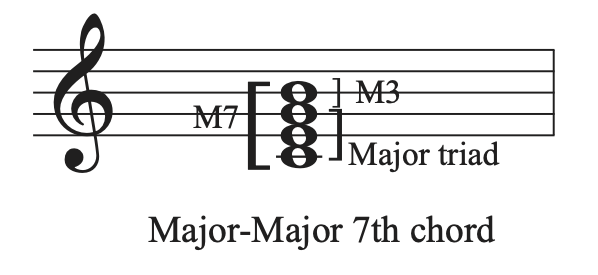
The major-minor 7th chord (abbreviated Mm7 or just 7)
The major-minor 7th chord is formed by adding a minor 3rd to the top of a major triad. This creates the interval of a minor 7th with the root of the chord, giving the major-minor 7th chord its name. The major-minor chord is also called the dominant 7th chord and is the most frequently used 7th chord in tonal music.
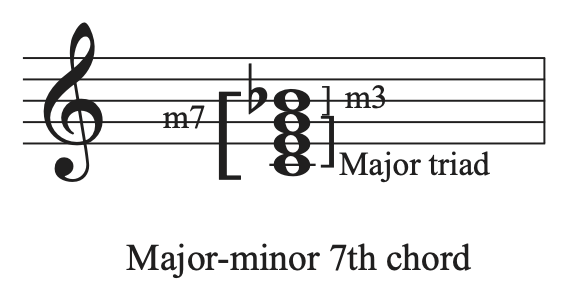
The minor-minor 7th chord (abbreviated mm7 or m7)
The minor-minor 7th chord is formed by adding a minor 3rd to the top of a minor triad. It is the only 7th chord that is built on a minor triad. The added 7th creates an interval of a minor 7th with the root of the chord, giving the minor-minor 7th chord its name.
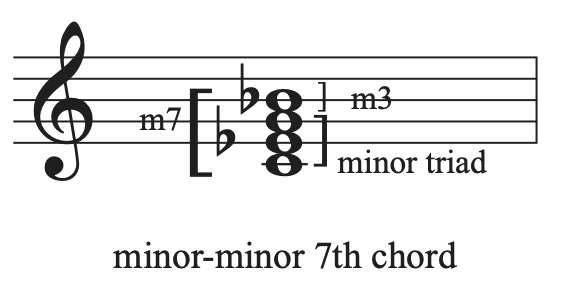
The half-diminished 7th chord (abbreviated with 7)
The half-diminished 7th chord is formed by adding a major 3rd to a diminished triad. The added 7th creates an interval of a minor 7th above the bass.

The fully-diminished 7th chord, also just called the diminished 7th chord (abbreviated ˚7)
The fully-diminished 7th chord is formed by adding a minor 3rd to the top of a diminished triad. The added 7th creates an interval of a diminished 7th above the bass, giving the chord its name.
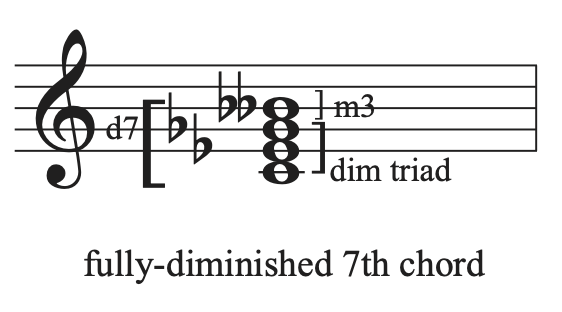
Naming chord members
The members of a 7th chord are named like triads. The chord consists of a root, a 3rd, and a 5th. The top member of a 7th chord is called the 7th of the chord. It’s important not to confuse the 7th of a 7th chord with the leading tone, which is scale degree 7 in a key. Like triads, the root, 3rd, 5th, and 7th of the chord retain their names, regardless of where each chord member appears on the staff.

Inversions of 7th chords
Because 7th chords have 4 chord members, there are 4 possible positions for each chord.
- When the root is the lowest sounding member of the chord, the chord is in root position.
- When the 3rd is the lowest sounding member of the chord, the chord is in first inversion.
- When the 5th is the lowest sounding member of the chord, the chord is in second inversion.
- When the 7th is the lowest sounding member of the chord, the chord is in third inversion.
Remember that the lowest sounding member of the chord determines the inversion of the chord. The upper voices can be in any order on the staff.
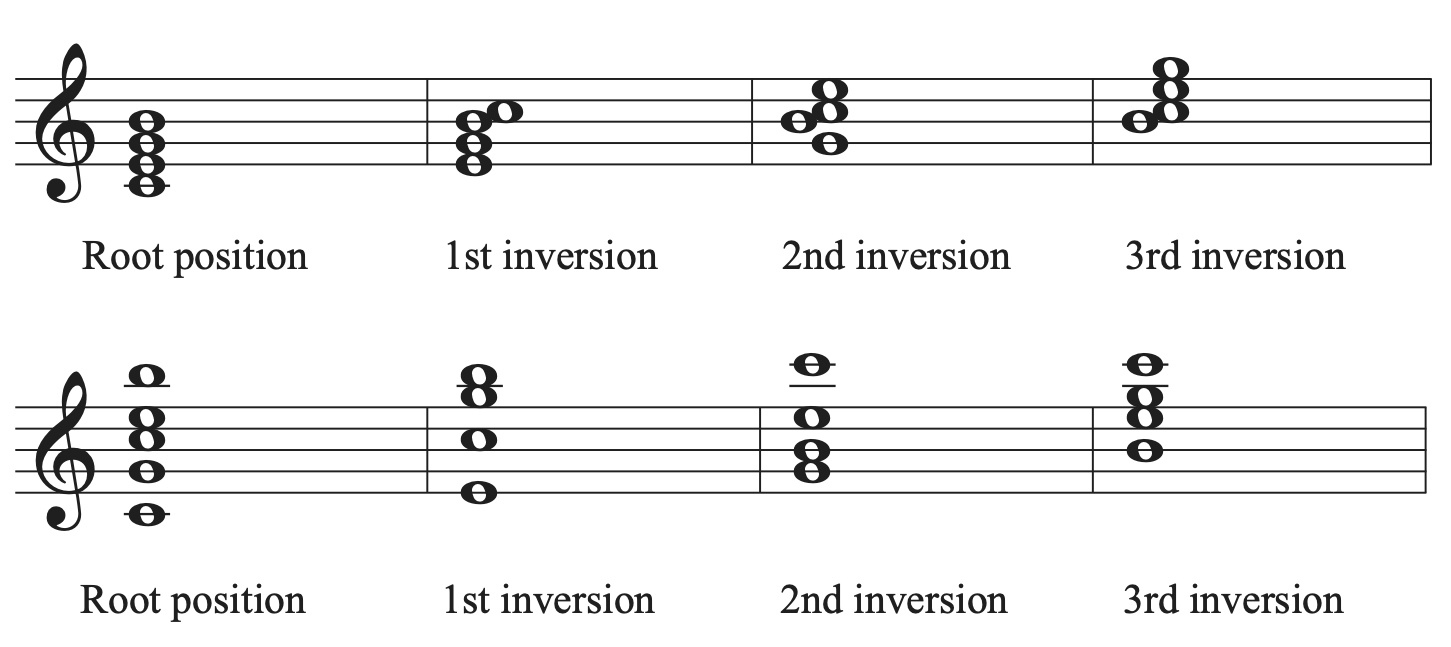
Why use Inversions?
Inversions add interest and smoothness to the melodic character of the bass line. Inversions keep the music moving forward because they are less stable than root position chords. Like triads, seventh chords become more unstable the farther they get from root position. Inversions add variety and interest to the music and can help expand the phrase.
Common Mistakes Made When Notating Chords
When writing notes that have accidentals on the staff, make sure to put the accidental on the line or space the corresponds with the altered note. Accidentals go to the left of the full chord, so should not be inserted between chord members in the middle of a chord.
Determining whether or not something is a 7th chord
When deciding whether or not a chord is a seventh chord, the first step is to make sure it qualifies as one of the 5 types of seventh chords we use in tonal music: MM7, Mm7, mm7, 7, or ˚7.
The musical genre used will also determine whether or not something can be called a seventh chord. In classical music, seventh chords started as non-chord tones. They eventually evolved and were considered part of chords, but the dissonant 7th of the chord was still carefully approached and resolved. In classical music, the 7th of a seventh chord is a tendency tone that always resolves down by step. It is approached by step or as a common tone from the previous chord. If the 7th chord is not approached and resolved properly, it is considered a non-chord tone. In other genres, like jazz and popular music that evolved later in history, the 7th of the chord is used freely, both in how it is approached and resolved. So, when analyzing music and labeling seventh chords, make sure to consider the genre of the music.
Analyzing Seventh Chords in Music
As with triads, analyzing music with seventh chords requires decision making and attention to detail. It is often possible to interpret passages in different ways and come up with different answers. As you learn more about how music work you will have a better understanding for why one choice might be better than another in an analysis. Here are the basic steps to follow when analyzing music:
First, stack the notes in 3rds so that you can find the root of the chord.
- Eliminate any double notes.
- Makes sure to look at the key signature so you don’t miss any accidentals that should be included with the chord.
- Make sure to look carefully at the rhythm so that any notes that are still sounded and were held over from previous chords can be included in your analysis.
- Figure out where the chord changes and make sure that all notes before the chord change are included with the chord. You know a chord changes when new notes appear that do not fit in the current chord, or when the bass pitch changes.
- Eliminate any pitches that are not chord tone. Non chord tones will be decorative pitches that are not part of the main chord and can be stacked into the triad. You can exclude those from your analysis.
- Remember that in classical music, the chordal seventh chords must be approached by step or common tone from the previous chord and resolved down by step in the next chord. Music written in other genres has a freer use of 7th chords.
- Fill in missing chord members if a triad is not complete. Not all chords will contain all notes. In order to have a triad, you need the root in order to establish the chord. The 3rd of the chord is most often included because it determines the quality of the chord. The 7th of the chord must be included in order to have a 7th chord. If a chord member must be omitted, the 5th is typically the chord member chosen. Any chord member that is omitted can be imagined as part of the chord, using the given key signature.
After determining which notes are chord members, and having stacked them in 3rd, analyze the quality of the seventh chords. Seventh chords must be one of the 5 types used in tonal music.
Then, look at the inversion of the chord to determine if the chord is in root position, first inversion, second inversion or third inversion. Include the root, quality, and inversion in your labels. See the examples below from J.S. Bach’s Brandenburg Concerto No. 2, movement 1. The first example shows a progression to analyze. The second example shows markings from the analysis including the root position chords and the chordal 7ths with their approach and resolution labeled.
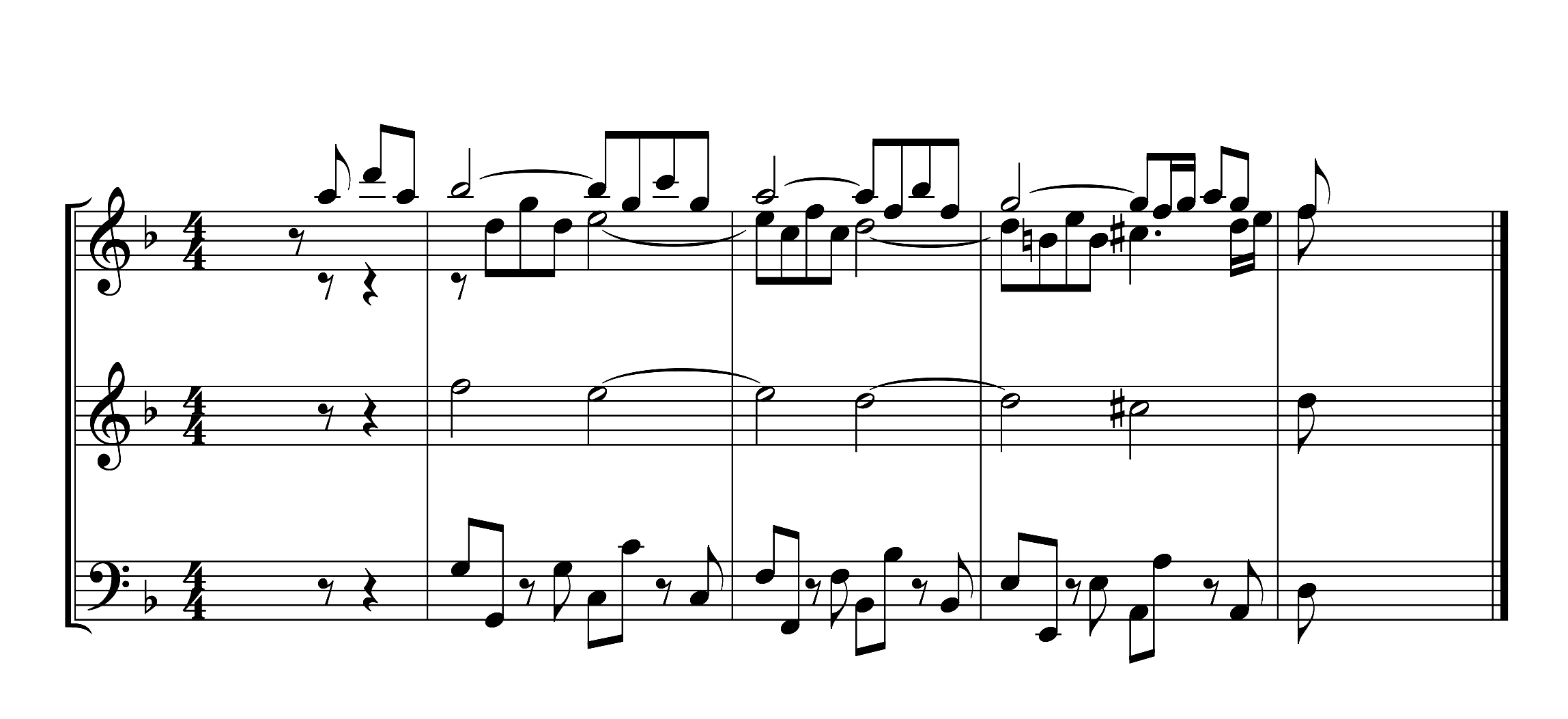
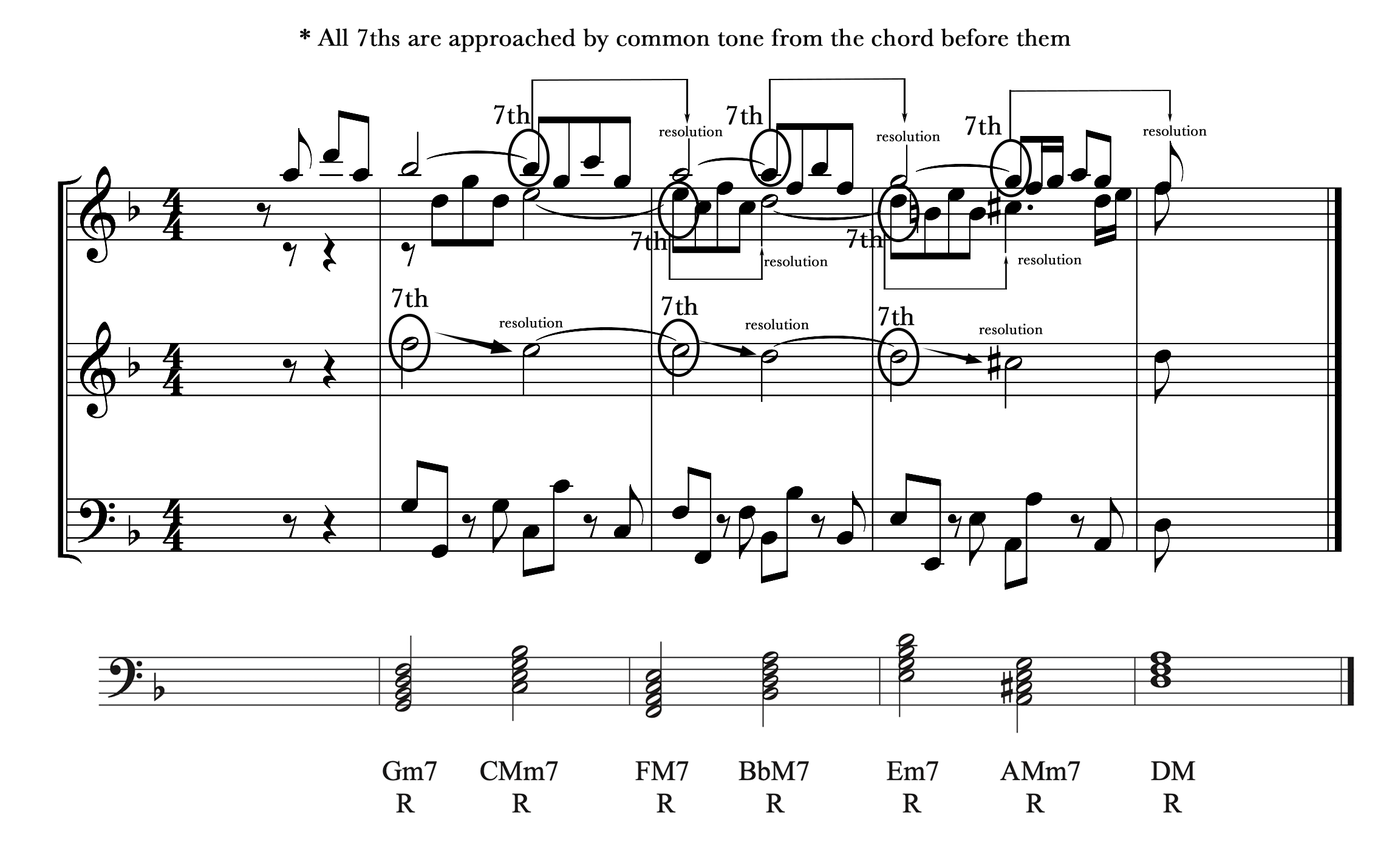
Look for seventh chords in the music you are currently practicing or studying. How are they used in comparison to the triads in your music? Can you hear the type of seventh chord used by the quality of its sound? Is there a certain seventh chord that is used more frequently than the others? If you can’t find any seventh chords, add sevenths to some of the triads in your music to see how that changes the sound and motion of the piece.

